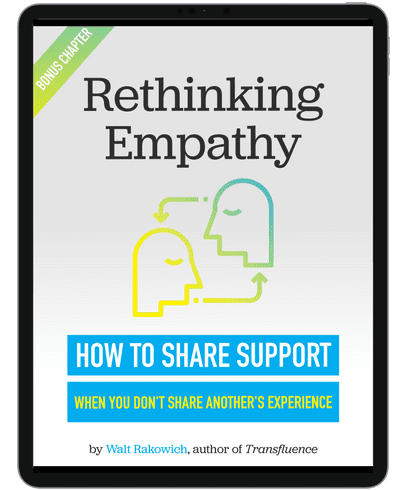The Atlantic’s Jacob Stern hit the nail on the head when he wrote, “The earthquakes and wildfires and wars keep piling up. When does our empathy run out?” During the week that Stern’s article ran, we had news of a hurricane working its way up the East Coast, updates on record-breaking wildfires raging on the West Coast, an earthquake in Haiti, and the withdrawal from Afghanistan — not to mention the next pandemic wave caused by the Delta variant.
Having survived the better part of two years under the cloud of a pandemic, people are already scraping the bottom of their empathy barrels. Stern’s question becomes the all-important pop quiz for those of us leading others. If there ever was a time when our human spirit was tested, it feels like today is that time. As leaders, we still have to inspire people to connect with one another and with a greater purpose.
Given all that’s going on outside the workplace, do we have enough empathy left for our colleagues and employees? According to research, our brains say yes but our actions need some encouragement. Today, more than 90 percent of employees, HR professionals, and CEOs agree that empathy is important, yet only 25 percent of employees believe that empathy in their organizations is sufficient.
That’s a 65 percent knowing-versus-doing gap. Unfortunately, agreeing that empathy is important and actually exhibiting empathy are two entirely different prospects. And it’s not just the workplace that is suffering from the chasm that exists between what is right and what actually happens. Our world is inundated with natural and social catastrophes that demand and often compete for our heartfelt attention.
Never miss a post about leadership, transparency, and trust by signing up for my weekly mailing list, delivered right to your inbox. Sign up here.
Even though natural disasters and other life-threatening events actually do increase our empathic responses and our philanthropic tendencies, psychologists agree that we’re in uncharted territory. Most of the research about our empathic tendencies is based on short-term or well-defined events—not a chain of events in quick succession during a two-year pandemic.
So how do we mitigate that knowing-versus-doing gap in our workplace culture despite the new terrain? We model what high-altitude climbers do when they approach a crevasse. One person serves as the anchor on solid ground and ties, or “belays,” themselves to another so that climber can walk across a ladder they’ve held at the base and let fall to the other side. Once that initial cautious traverse is complete, the two people have created a more stable scenario for other team members.
Similarly, executive team members must anchor everyone to the positive behavior they hope others will repeat and feel safe exhibiting. Once leaders have taken the risk to bridge the gap, others follow more easily, creating a norm for safe crossings. Stanford professor and The War for Kindness author Jamil Zaki says that creating an empathic culture means supporting positive behaviors by consistently recognizing or modeling them. He explains that the loudest voices are rarely the kindest, and when they dominate interactions, people tend to perceive that the boisterous colleague represents the majority. Zaki calls these misperceptions “phantom norms.”
The reality is that “empathy belongs to the quiet majority. Leaders can fight back against phantom norms by drawing attention to the right behaviors,” says Zaki. He adds that mindsets can change, and his research proves that empathy is contagious. What’s more, explains Zaki, is that when employees are presented with evidence that empathy is less like a trait and more like a skill that can be developed, they are more inclined to work at it. So the first step in cultivating an empathic culture is establishing that it’s a skill that can be built.
The fact that many of us are asking if there are limits to empathy is a good sign. It means that we’re concerned about all that’s going on in the world at once. Our concerns are justified because the answer is mixed. Some of us may experience periods of desensitization, while others are stepping up philanthropically and personally like never before. The best thing we can do is show up like leaders do, seek out ways to normalize desirable behaviors, and make room for building the skills we value. The silent majority is counting on us.
How to Share Support When You Don’t Share Another’s Experience
If you’d like to explore more about empathy and how to improve your leadership empathy skills, download my new bonus chapter.


Alex Lagerborg
This is very good…Thanks Walt..!!!
Walt Rakowich
Thanks Alex!